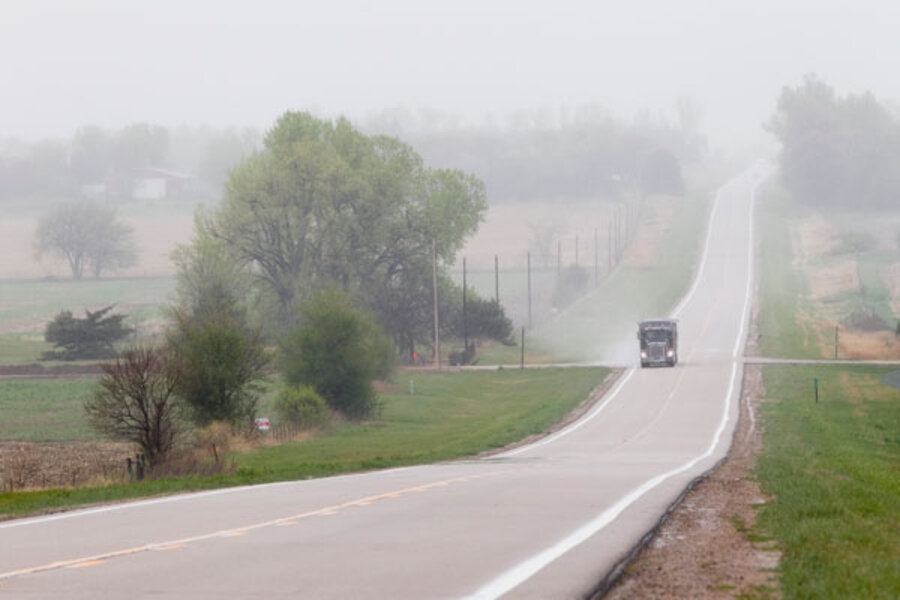Keystone XL pipeline: New route, new problems for Obama?
Loading...
Nebraska officials on Thursday unveiled TransCanada's newly proposed route for its controversial Keystone XL pipeline, which would jog eastward to avoid the key aquifer underlying the Sand Hills region of the state.
TransCanada, a Canadian pipeline company, hopes to build the 1,400-plus mile Keystone XL down to Cushing, Okla., connecting it there with a second, southern leg. That 480-mile leg would take the diluted heavy bitumen oil from Alberta's tar sands region to refineries on the Gulf Coast of Texas.
President Obama in January rejected the pipeline, saying legislation passed by Congress didn't allow enough time to evaluate the pipeline's environmental impact or whether it is in the national interest. Congress had given the White House 60 days.
The potential new route is being unveiled just as a Republicans in Congress are considering an attempt to wrest authority for its review from the Obama administration.
Currently, the State Department must approve the permit. But the Republican-controlled House of Representatives has inserted language into a key transportation bill that would essentially mandate federal approval of any route that Nebraska approves.
The Democratic-controlled Senate is unlikely to back the House's language, and Mr. Obama has said he would veto such a bill with such a stipulation. But the moves create a new wrinkle in the election-year political maneuvering by both parties to blame the other for delays in the pipeline's construction.
Last week, the Nebraska Legislature voted to separate the state's review of the project from previous coordination with the State Department in an attempt to jump-start the process. According to the Nebraska plan, the Nebraska Department of Environmental Quality (NDEQ) will evaluate the route of any currently proposed or future pipeline in the state. If approved by NDEQ and Republican Gov. Dave Heineman, the pipeline route would have state authorization to proceed.
“Nebraska will move forward on the review process of the proposed Keystone XL pipeline and any future pipelines that will create jobs and reduce US dependence on Middle Eastern oil,” Governor Heineman said in a statement after signing the legislation on April 17. “The review process is a top priority for Nebraska.”
TransCanada's new proposed route would still cross the Ogallala aquifer, which underlies much of the state, but would avoid the Sand Hills, where groundwater is very close to the surface.
Critics of the plan say the new route still winds its way perilously close to, and across, sensitive aquifer areas and would receive only a cursory review under the new state law. What's needed, they contend, is a thorough environmental impact study in accord with federal law.
"TransCanada hasn't even applied for a federal permit yet," says Jane Kleeb, executive director of Bold Nebraska, which opposes putting the pipeline through the aquifer area. "All they're trying to do is get Nebraska to get rubber stamp this route so they can then go to the State Department and say: 'We've solved Nebraska's problem, they've approved our route, so now give us our permit.' "
TransCanada officials say the new pipeline route will meet requirements laid out by the state and solve the problem of future pipeline spills tainting vital groundwater.
"This report ... identifies a proposed preferred corridor to advance the Keystone XL pipeline project while realigning the route around the Nebraska Sandhills," Shawn Howard, a spokesman for TransCanada said in a statement. "Once again, this process is back in the hands of Nebraskans, who overwhelmingly support the safe construction and operation of this critical North American energy infrastructure project."
But other observers say the move by TransCanada and Heineman is designed to apply fresh pressure on Mr. Obama during an election year.





